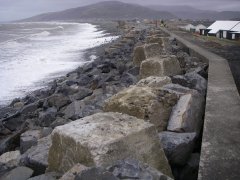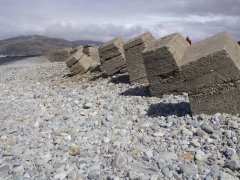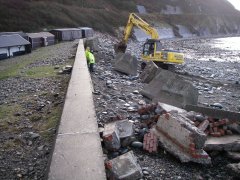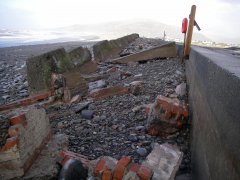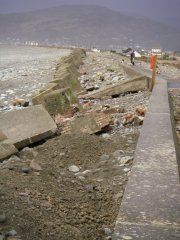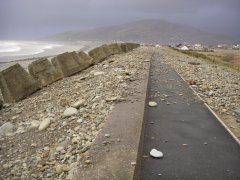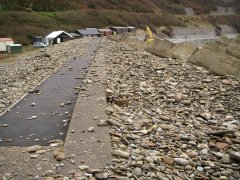After
IMGP0016.JPG
http://fairbournecommunityfloodplan.cymru/images/Photos/IMGP0016.JPG
IMGP0541.JPG
http://fairbournecommunityfloodplan.cymru/images/Photos/IMGP0541.JPG
IMGP0003.JPG
http://fairbournecommunityfloodplan.cymru/images/Photos/IMGP0003.JPG
IMGP0579.JPG
http://fairbournecommunityfloodplan.cymru/images/Photos/IMGP0579.JPG
IMGP0580.JPG
http://fairbournecommunityfloodplan.cymru/images/Photos/IMGP0580.JPG
IMGP0591.JPG
http://fairbournecommunityfloodplan.cymru/images/Photos/IMGP0591.JPG
IMGP0592.JPG
http://fairbournecommunityfloodplan.cymru/images/Photos/IMGP0592.JPG
IMGP0595.JPG
http://fairbournecommunityfloodplan.cymru/images/Photos/IMGP0595.JPG
After a Flood
This Community Flood Plan webpage is intended to offer advice in the period after a flood. Flood victims could be out of their homes for up to 12 months whilst they are in temporary accommodation. During this period they will have to deal with insurance company loss adjusters, as well as building contractors and having their property refurbished.
HAZARDS ON ENTERING YOUR HOME
Do not turn any lights or appliances on until a qualified electrician has checked the entire electrical distribution system especially below the water line. Once inside, move around slowly and carry a torch as you inspect the damage. Flooring and stairways need particular attention. Watch for loose floorboards, holes in the floor, protruding nails and sagging ceilings that may be ready to fall. Wet plaster is heavy and dangerous and if loose, use a broom or long handled instrument to break it down before doing any work.
DRINKING WATER
If there is a chance that your drinking water has been contaminated, drink only boiled or bottled water until your water supply has been fully restored and declared safe by the health authorities. Municipal water systems as well as private systems are subject to water contamination. Health officers should certify water systems are fit for consumption.
FOOD
Discard all foods exposed to flood water except those in sealed (airtight) metal cans. Remove labels from the outside and use a permanent marker pen to identify the contents. Wash the cans in warm soapy water. Then immerse in a solution of three quarter cup of household laundry bleach per 5 litres of water, for two minutes to disinfect the outside of the cans and then rinse in clean water. Do not treat aluminium cans with bleach solution.
HYGIENE
· Remove all rubbish into skips and separate decaying vegetation into separate containers.
· Wash out mud, dirt and debris from your home as soon as possible.
· Use a hose and start from upper limit of flooding, and work downwards to the floor or basement.
· Wash surfaces that have been covered in flood water, in order to reduce the danger of flood-carried infections. Pay particular attention to surfaces that children can reach.
· Wash your hands thoroughly (with disinfectant soap) after handling contaminated articles.
· To be on the safe side, consider all items exposed to flood water as contaminated
INSURANCE CLAIMS
Insurance claims need to be considered first. The advice contained within this website is of a general nature. Always seek expert advice on repairs or discuss your concerns with your insurance company. This needs to be done prior to removing damaged items and cleaning the property. It is always a good idea to take photographs and/or video of any damage which could be used as evidence when making an insurance claim.
FLOOD DAMAGED BUILDING REPAIRS
A flooded building will probably be repaired under a flood insurance policy and the insurance company’s loss adjuster will probably agree a schedule of repair with a building contractor. It is usual for flood damage to take 8 to 12 months to complete and be ready for reoccupation. The repair schedule could possibly be based on some standard procedures for flood damage and here are some points to consider:
· The main considerations are to dry the building materials and furnishings out as soon as possible. Delay renovation and redecoration as long as possible and at least until building components are substantially dry.
· Drying involves draining, flushing or pumping out mud and water from wall cavities, ducts, service pits and basements; ventilating as much as possible by removing floor boards to assist in drying the floor and floor joists.
· Drying can also be assisted by the use of fans and fan heaters. Waterlogged insulation material should be removed. In the case of masonry houses, mud should be cleared from the wall cavities and ventilators. Electricity and gas services pose special problems and the appropriate authorities should be contacted to check and, if necessary, to arrange for repair of the flood-affected fittings.
· The natural tendency to restore the appearance of a flood damaged building as soon as possible should be resisted. Drying out is likely to take a long time – possibly months – depending on the type of construction, and premature painting of walls and restoration of floor coverings will delay drying of the structure and probably lead to early manifestations of dampness (such as mould growth) and failure of paint films.
· Similarly, repainting and other repairs to cracked brickwork or concrete masonry are best left until the foundation soil has dried out and foundation movements have ceased. Doors and windows should not be re-planed to make them fit their frames until the timber is back to its normal moisture content, which may take several weeks. One thing that should be done properly is to oil locks and hinges to prevent binding with rust.
BRICKWORK AND CONCRETE BLOCKWORK
Mud on the walls will make them look unsightly and will probably be stuck fairly firmly, but mud will seriously affect the performance of masonry. The mud should be cleaned off using water, detergent and a good stiff nylon brush. It is not a good idea to use acid as this could cause staining.
As the walls dry out, there is a fair risk of white salt growth on the bricks or blockwork. This is not serious and should stop once the wall is fully dried. In most cases it can be removed with a bristle broom. Acid treatments may be effective as a last resort, but should be used cautiously.
WALL CAVITIES
One of the places where cleaning is often overlooked, is within the cavities of timber, brick veneer or cavity brick walls. Make sure there is no mud present that will hold water. Take off the top and bottom boards, part of the wall lining or a few bricks to inspect the cavities. If necessary, flush them out and leave open until everything is dry. Remember that with timber frames there may be noggins in the framework half-way up which could hold mud.
SUB-FLOOR SPACE
Insurance repair schedules will probably involve replacement of all flooded joinery but if it is being repaired then clear all the mud out from the sub-floor. This may involve taking up some floor boards which should be left up to help drying. Everything should be done to increase under-floor ventilation, for example taking out bricks from the walls below floor level.
Careful attention should be given to clearing away mud from around the floor joists and other sub-floor members.
FLOORS
Insurance repair schedules will probably involve replacement of all flooded timber floors, but if it is being repaired do not attempt to straighten out warped or buckled wood floors until they have dried out.
Wood and plywood expand when wet, then return to original dimensions when dry.
Flooring may require replacing, refastening or refinishing, but if there is any question, wait until after drying is complete to make the decision. Remove floor coverings to allow to dry. Mop up excess water as soon as possible.
HEATING DUCTS
Insurance schedules will probably involve professional trades, undertaking flood assessment and restitution.
STAINS
Rust stains can be treated with proprietary compounds. Stains from timber can be treated with bleach. Some bleach (such as oxalic acid) can be dangerous to humans and should be handled with care. Oil stains, grease, etc. can be treated with detergents.
MOULD
Insurance repair schedules will probably involve replacement of all flooded joinery and plaster work, but if it is being repaired it is highly likely that wet lining boards and some timbers will grow mould during the drying process. Remove it with hypochlorite bleach used in accordance with the manufacturer’s recommendations. Repeated applications may be necessary as the drying process continues.
Note that the bleach may affect the colour of some materials.
Wetting for a short period does not cause permanent damage to many building materials, but they should be dried out as quickly as possible. Check for hidden pockets of water and think of ways to facilitate the drying. In most cases, especially masonry materials, drying out can take a very long time – possibly months.
Don’t repaint walls too soon. Drying will be quicker if furniture and pictures are kept away from them.
BRICKWORK
Don’t rush into brickwork repairs. Wait until there is a fair chance that all movement has ceased before patching any cracks. Some cracks may actually close up as the foundations dry out. Minor cracks are not serious in brick veneer structures as there is usually a large margin of structural safety.
JOINERY
Insurance repair schedules will probably involve replacement of all flooded joinery, but if it is being repaired, don’t rush into repairing things until the timber has a chance to dry. A door may have swollen and jammed while it is still wet. Don’t trim off while wet. Wait until it is dry – it will probably fit again. It may help to take off architraves to help drying.
CLEAN / SALVAGE HOUSEHOLD ITEMS
Ideally you will have new – for- old insurance cover, but if your uninsured or part covered, you may need to consider recovery of flood damaged items and these notes may help.
Wait until your home and belongings have been thoroughly cleaned and dried before deciding what to throw out. They may return to good condition or at least be repairable. Much can be salvaged if immediate restoration steps are taken as described in the following pages.
BEDDING
· Mattresses soaked with flood water generally are damaged beyond use and should be discarded.
· Feather and foam rubber pillows may be washed, but those stuffed with kapok or cotton may not.
CLOTHING, HOUSEHOLD LINENS & WOOLLENS
These items will probably be replaced with new under a flood insurance policy, but here are some points to consider if you need to recover flooded items.
· Allow clothing that is to be dry-cleaned slowly at room temperature; keep away from direct heat.
· Shake, brush, or vacuum loose dirt from articles before sending them to the cleaners.
· To clean washable woollen clothes and blankets, first shake and brush dirt. Rinse repeatedly in lukewarm water in order to remove particles of soil lodge in fibres.
· Dry woollens in a warm place but not near a fire or direct sunlight. Never allow them to freeze.
· To clean mud-stained, washable clothing and household linens other than woollens, first brush off any loose dirt, then remove as much mud as possible by rinsing repeatedly in cold water.
· Electric blankets should be dried on a clothesline and gently stretched into their original size and shape. They should NOT be used until safety tested by a qualified electrician.
· Wash lightweight quilts in the same manner as woollens. Dry outdoors in the sun.
· If possible, remove unpleasant odour. Thick comforters may need to be taken apart and the cover and filling each washed separately.
· To further ensure sanitation of washable articles, sanitise the washing machine occasionally to kill bacteria that live on the interior surface. Pour a disinfectant into the empty machine, then complete a 15minute cycle at the hot water setting.
· If you leave the carpeting on the floor, you risk fostering wood decay, mildew, and warping of the flooring by hindering its drying. However, if you remove carpeting, you risk shrinkage. Although professionals do have methods of controlling shrinkage, the chance of preventing it entirely for wall-to-wall carpeting is unlikely.
· If linoleum is broken, brittle and cannot be salvaged, remove it with a chisel or hoe. Be sure to let the underfloor dry thoroughly before laying any type of floor covering.
FURNITURE
· These items will probably be replaced with new, under a flood insurance policy, but there are some points if you need to recover flooded items.
· Promptly place pieces of wood or aluminium under pieces of furniture that have castors or metal caps on the legs to avoid staining carpets.&l

